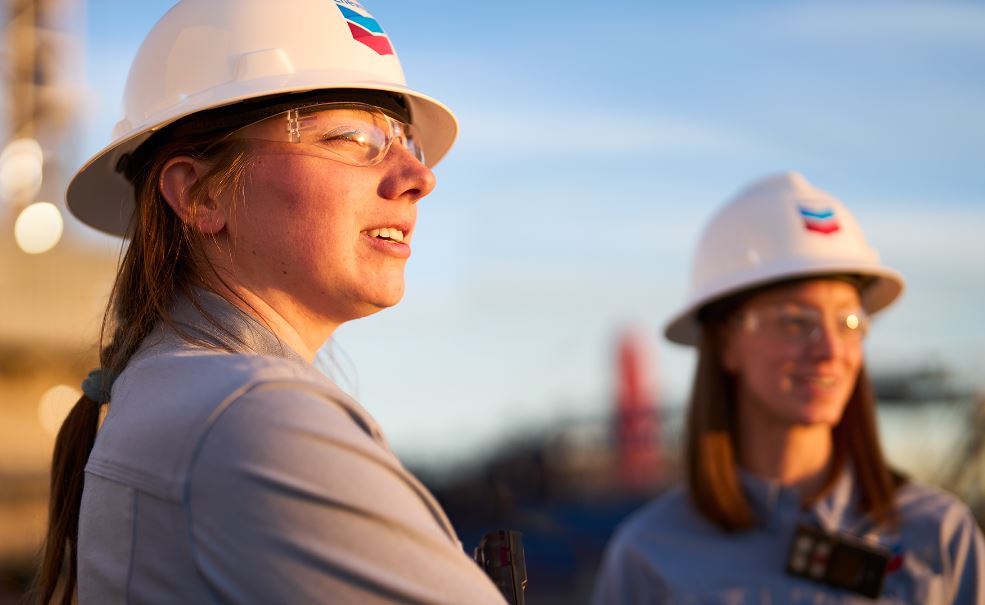Chevron is advancing plans to develop a $5 billion blue hydrogen and ammonia facility in Port Arthur, Texas, but the project’s financial viability appears tightly linked to the timeline for securing U.S. federal tax incentives.
Filed under the name “Project Labrador,” the facility would be one of the largest blue hydrogen developments in the U.S. to date—yet its economic calculus hinges on the expiring 45V hydrogen production tax credit.
According to documents filed with local authorities, construction is expected to begin in 2027, targeting commercial operation by 2032. This would bring the project just under the wire to qualify for the 45V tax credit, which offers up to $3 per kilogram of clean hydrogen produced, but only for projects that begin construction before January 1, 2028.
Project Labrador has been pitched as a cornerstone of the federally supported HyVelocity Hub in Texas, one of seven regional hydrogen hubs selected by the U.S. Department of Energy under the $7 billion hydrogen hub initiative funded by the Bipartisan Infrastructure Law.
Port Arthur—home to one of the largest oil refining complexes in the U.S.—offers access to extensive fossil gas infrastructure and export terminals, making it an ideal site for blue hydrogen production, which relies on natural gas feedstock combined with carbon capture and storage (CCS).
But unlike green hydrogen, blue hydrogen’s climate credentials are under increasing scrutiny. Its viability depends not only on carbon capture efficiency—typically above 90% is required to meet lifecycle emissions thresholds—but also on minimizing upstream methane leakage. The Environmental Protection Agency estimates that methane has over 80 times the global warming potential of CO₂ over a 20-year horizon, making upstream emissions a critical risk factor for blue hydrogen’s climate claims.
Chevron has not publicly disclosed its carbon capture strategy for Project Labrador, nor the expected capture rate, but projects of this scale typically aim to sequester several million tonnes of CO₂ annually. The HyVelocity Hub proposal includes CCS infrastructure, and Texas’ geology is considered favorable for long-term CO₂ storage, which could help de-risk the project’s regulatory compliance.
Cost Structure and Policy-Driven Economics
The 45V tax credit is essential to blue hydrogen economics in the U.S., particularly in the absence of a robust carbon pricing mechanism. At up to $3/kg, it can offset much of the cost differential between grey hydrogen (produced from natural gas without carbon capture) and low-emissions hydrogen.
But the credit is not guaranteed. To qualify for the highest tier, projects must meet stringent lifecycle greenhouse gas intensity thresholds—below 0.45 kg CO₂e per kg of hydrogen. This forces blue hydrogen developers to optimize both their CCS systems and upstream gas supply chains to minimize emissions.
Given the capital intensity of the project, Chevron’s request for local property tax breaks further underscores the importance of public-sector support in shaping project viability. Without federal and local incentives, blue hydrogen remains economically uncompetitive against conventional fossil-based alternatives.
While Chevron’s plan to begin construction in 2027 keeps it technically eligible for the 45V tax credit, the delay in commercial operation until 2032 raises questions about hydrogen offtake market maturity, regulatory stability, and infrastructure readiness.
Hydrogen transport, storage, and end-use demand—particularly for ammonia exports, domestic heavy industry, and power generation—are still nascent. Without clear offtake agreements or pricing structures, the bankability of a project of this scale could face investor skepticism.
The project’s late operational date also means it will enter a market potentially shaped by rapid cost declines in green hydrogen. As electrolysis costs fall and renewable electricity becomes cheaper and more abundant, blue hydrogen’s relative competitiveness could diminish, especially in markets prioritizing zero-emissions hydrogen.
Stay updated on the latest in energy! Follow us on LinkedIn, Facebook, and X for real-time news and insights. Don’t miss out on exclusive interviews and webinars—subscribe to our YouTube channel today! Join our community and be part of the conversation shaping the future of energy.
